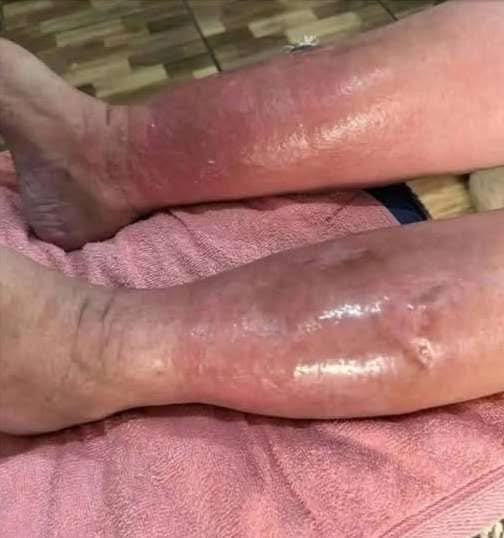Our feet quietly carry us through life, often without much thought or appreciation. They take the weight of our bodies, adapt to uneven terrain, and endure hours of walking or standing. Because of this constant workload, they can sometimes show early signs of changes happening elsewhere in the body.
While most variations in how your feet look or feel are harmless and temporary, sometimes they may be worth a closer look. This guide explores common changes you might notice in your feet, possible everyday explanations, and when it might be wise to get a professional opinion.
Why Feet Can Reveal More Than You Think
The feet are complex structures, made up of dozens of bones, muscles, tendons, nerves, and blood vessels. They work in coordination to support balance, movement, and posture. Because they are at the farthest point from the heart, any slowdown in circulation or build-up of fluid can become visible there first.
That doesn’t mean every ache or swelling is a sign of a major health concern — often, the explanation is simple, like wearing tight shoes or standing too long. But learning to recognize patterns can help you make better choices about footwear, activity levels, and self-care.
A Common Change: Swelling in the Feet or Ankles
One of the most noticeable foot changes people experience is swelling. This swelling, which may be mild or more pronounced, can come and go or linger for a while.
Why It Happens
There are multiple possible reasons:
- Extended Standing or Sitting
If you’ve spent hours on your feet at work or stayed seated during a long trip, fluid can naturally settle in your lower limbs. Gravity plays a big role here — when you’re upright, fluids in the body move downward. - Footwear Choices
Shoes that are too tight, lack proper support, or have narrow toe boxes can limit circulation and lead to puffiness in the feet and ankles. - Seasonal and Weather Factors
Hot weather can cause blood vessels to expand, making it easier for fluid to collect in the tissues. This is why some people notice swelling during summer months more than in winter. - Lifestyle and Diet
Consuming high amounts of salty foods can cause the body to retain water, leading to temporary puffiness in the feet.
When Swelling Might Need a Second Look
While mild swelling after a long day is normal and often fades with rest, there are certain situations when it’s worth speaking with a healthcare provider:
- Swelling appears suddenly without an obvious reason.
- One foot swells noticeably more than the other.
- The area feels unusually warm, painful, or changes color.
- Swelling is accompanied by shortness of breath, chest discomfort, or dizziness.
In these cases, the swelling could be linked to an underlying issue that requires professional assessment. Even if the cause turns out to be minor, it’s better to have clarity than to overlook something that might worsen over time.
Inflammation and Discomfort in the Feet
Inflammation is another reason feet may feel tender or appear swollen. It’s often related to overuse, such as after running, walking long distances, or engaging in sports. Inflammation may also be connected to footwear that doesn’t provide enough support.
Signs of inflammation can include:
- Warmth in the affected area.
- Mild redness or irritation.
- Stiffness after rest, especially in the morning.
Simple measures like gentle stretching, wearing cushioned shoes, and resting the feet can help reduce discomfort. Applying a cool compress for short periods may also provide relief.
Lifestyle Factors That Influence Foot Comfort
Many day-to-day habits can affect the way your feet feel:
- Travel – Long flights or road trips can limit movement, encouraging fluid retention.
- Footwear Habits – Alternating between different types of shoes can prevent excessive pressure in the same spots.
- Work Environment – Jobs that require prolonged standing (like teaching or retail work) can put stress on the feet.
By making small adjustments, such as taking breaks to walk or stretch, choosing more supportive shoes, and staying hydrated, you can help minimize discomfort.
Everyday Steps to Support Foot Health
Healthy feet can improve overall comfort and mobility. Here are some simple ways to keep them in good condition:
- Keep Moving
Gentle walking or stretching can help maintain circulation and flexibility in the feet. - Elevate When Possible
Lifting your feet above heart level for 15–20 minutes helps reduce pooling of fluids in the lower limbs. - Stay Hydrated
Drinking water regularly supports overall circulation and helps balance fluids in the body. - Select Proper Footwear
Shoes should fit well without squeezing and offer enough cushioning for your activities. - Maintain a Balanced Diet
Eating nutrient-rich foods supports overall body health, which benefits the feet as well.
Observing Other Foot Changes
In addition to swelling, there are other changes that can offer insights into your well-being:
- Skin Changes – Dryness, peeling, or color shifts can result from environmental factors or changes in circulation.
- Temperature Differences – One foot feeling noticeably cooler or warmer than the other may indicate altered blood flow.
- Nail Appearance – Brittle or thickened toenails can sometimes be linked to footwear pressure or minor fungal issues.
The Role of Preventive Care
Preventive care is one of the best ways to keep your feet in good condition. Regular self-checks, especially for those who spend long hours standing or walking, can help identify small issues before they become bigger concerns.
Consider setting aside time once a week to:
- Examine your feet for redness, swelling, or unusual marks.
- Moisturize to prevent cracking and dryness.
- Rotate shoes to avoid excessive wear in one pair.
When in Doubt, Get It Checked
It’s easy to dismiss minor discomfort in the feet as just a part of daily life. However, if something seems out of the ordinary and doesn’t improve after a few days of rest and home care, it’s worth consulting a healthcare professional.
Even if the diagnosis turns out to be simple, the reassurance alone can provide peace of mind — and in some cases, catching a problem early can make treatment quicker and easier.
A Foot-Friendly Daily Routine
Creating small, consistent habits can go a long way in keeping your feet comfortable:
- Morning Stretch – Before getting out of bed, gently flex and point your toes to warm up the muscles.
- Midday Break – If you work at a desk, take a few minutes each hour to stand and move around.
- Evening Care – Soak your feet in warm water for relaxation, followed by moisturizing lotion.
These steps not only promote foot health but can also contribute to overall comfort and relaxation.
Final Thoughts
Your feet are more than just the base that carries you from place to place — they can sometimes act as early indicators of changes in your overall condition. While most variations in swelling, color, or sensation have simple explanations, paying attention to persistent or unusual patterns is a smart approach.
By combining awareness with practical self-care, you can support both your foot health and your general well-being. Remember: healthy feet can make daily activities more enjoyable, reduce fatigue, and help you stay active for years to come.



